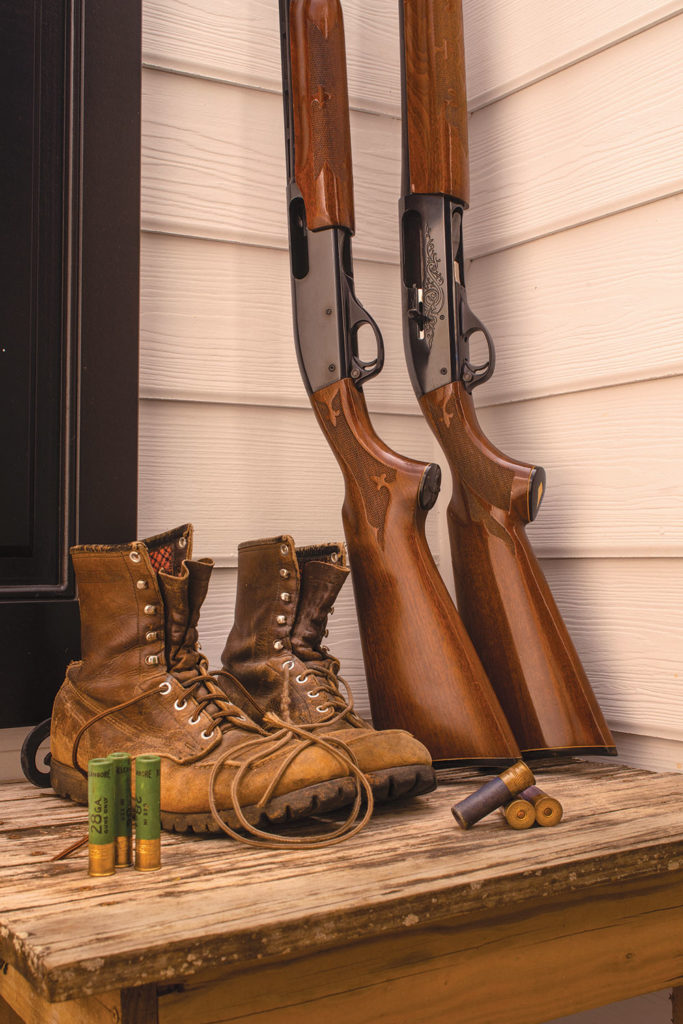Treasured Objects

I grew up on a small farm, and remember with mixed emotions that after the last snow and the first sign of spring flowers, we had a day called Spring Cleaning. For us kids, it was the opposite of a holiday. With pain and animosity, I witnessed the gathering of my fishing, hunting, and camping gear; outdoor books and magazines; flora and insect collections; and other treasures to be scrutinized and put away neatly — or hauled to the dump. Back then, I could never decide for sure if the sentimental value of an item outmatched its usefulness — things such as broken-bladed pocketknives, rusty casting reels, hookless bass plugs, empty shotgun shells, leaky tents, outdated maps, and magazines that I cherished back then. I don’t know exactly why it was so hard to part with much of that stuff; maybe because it was so hard to get when I was a boy. I can’t remember anything I just plain wanted to throw away. Which might explain my large accumulation today of fishing and hunting gear and stockpiles of outdoor books and game-management literature.
It’s sometimes embarrassing when a person comes into my study in full view of the hunting and fishing library yet has no interest in seeing a copy of Krider’s Sporting Anecdotes, printed in 1853; the complete set of first-edition books by Nash Buckingham; classics such as Game Management, A Sand County Almanac, and Round River by Aldo Leopold, the father of wildlife management; a personal signed copy of A River Runs Through It by Norman Maclean; a row of Thomas McGuane and Gene Hill books; and other upland-hunting books and biological publications written in the last 150 years.
On my desk, and on the shelf above and hanging on the walls, are many treasured items of memorabilia. For example, my beautiful little Hardy Featherweight reel, which belonged to legendary fly fisherman Joe Brooks and was given to me by Joe’s wife Mary after he passed away; it holds sentimental memories of when I fished with him. Or the attractive, smooth, round rock I collected in the pool where I caught my first 25-pound steelhead from the Kispiox River in British Columbia.
I’ll admit I’m not surprised when a neophyte seems to be oblivious or uninterested in the book titles or the unfamiliar objects on display; but I’m a little bit surprised that the three beautiful vintage English double guns, showcased in plain view, would not be admired by everyone.
Each one of these lovely, London best sidelock doubles was hand-built between 1880 and 1915, during the Golden Age of British gunmaking. The level of quality showcased what the London gun trade was capable of in the Edwardian Era. Each gun has more than 100 years of field-shooting history behind it.
How things have changed. In my younger years, I had several quality shotguns but admired them only for their function in the field. Largely from reading my historical library, I developed an interest in old British shotguns that began years ago. I care about double guns because they are legendary for their loveliness, lightness, balance, and handling when fired.
Let me assure you, I don’t show off my British doubles. They have come to me from hard work. But my real purpose for having these fine guns is to share them with my guests when hunting the Montana prairies. In my mind, I’m confident that at one time these English shotguns were traditionally used on the opening day of red grouse shooting in Scotland, when it was mandatory to have a “London Best” 12-bore double to pursue these noble gamebirds. I feel the same way about the Magnificent First in Montana, the opening day for gray partridge hunting (called Hungarian partridge in North America), a fine European import that deserves the same quality of double gun in the field as its Scottish cousin the red grouse.
When holding one of these lovely English doubles, I have an innate curiosity of the past owners’ shooting history. Was the first proud owner shooting driven red grouse with “hot barrels” from lots of time at a butt? Was the next owner shooting high incoming pheasant on a drive? Or maybe the last British owner was rough shooting grouse over flushing dogs during a light Highland rain? All of these — gun, dog, and bird — are the roots of my wingshooting passion. On the rare occasion when Huns flush toward me, the vintage double gun in my hand seems so seasoned that it responds as if a past gentleman gunner is doing the shooting for me at driven gray partridge. Every British best gun was made to last forever, and was made to be used extensively in all kinds of weather. My double guns continue adding years to their history, now on the American scene.
My study holds my passions — classic publications, sporting treasures, fine old English doubles, and my pointing dogs resting at my feet.
I don’t know exactly why it was so hard to part with much of that stuff; maybe because it was so hard to get when I was a boy. I can’t remember anything I just plain wanted to throw away. Which might explain my large accumulation today of fishing and hunting gear and stockpiles of outdoor books and game-management literature.
























